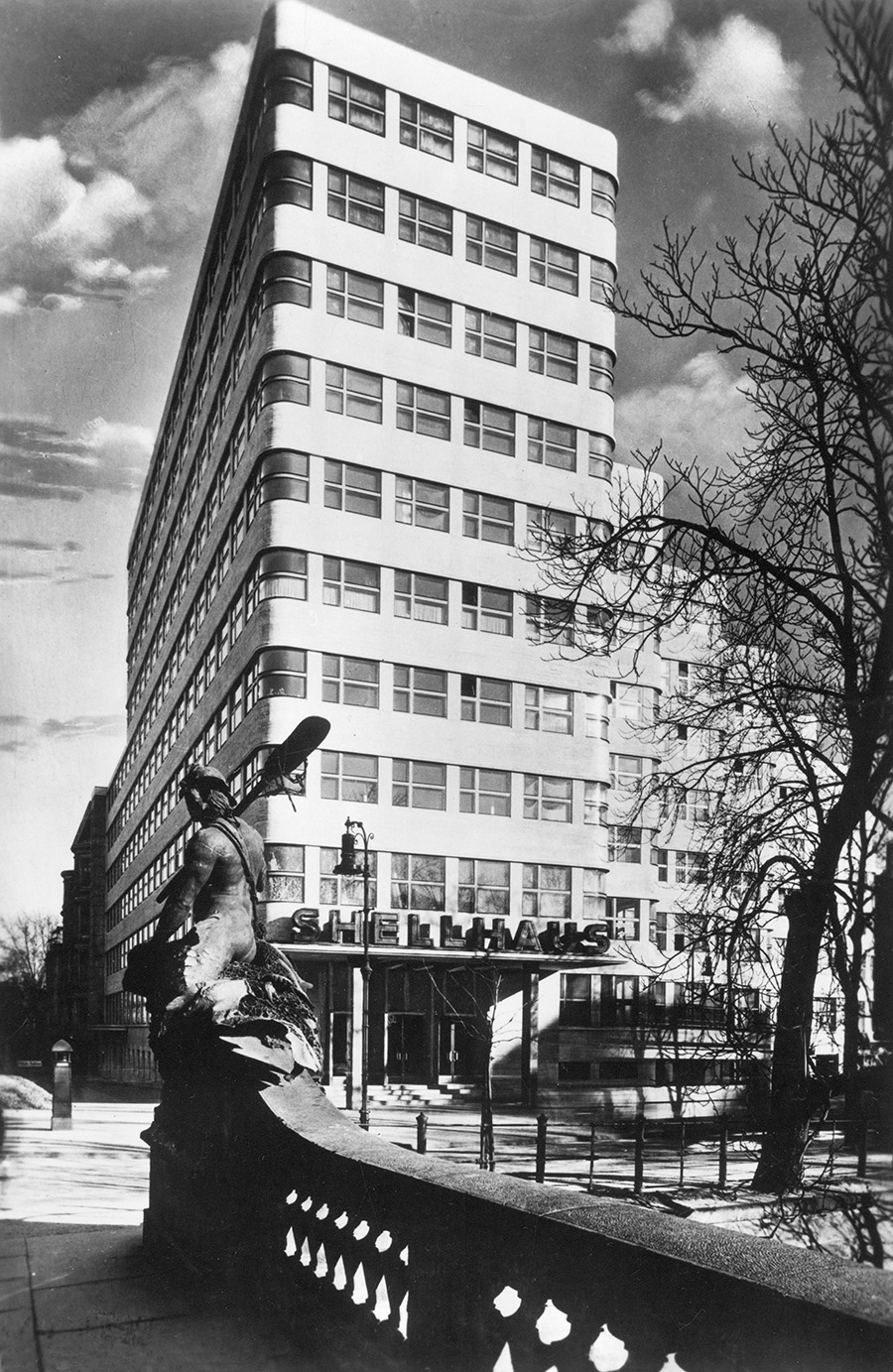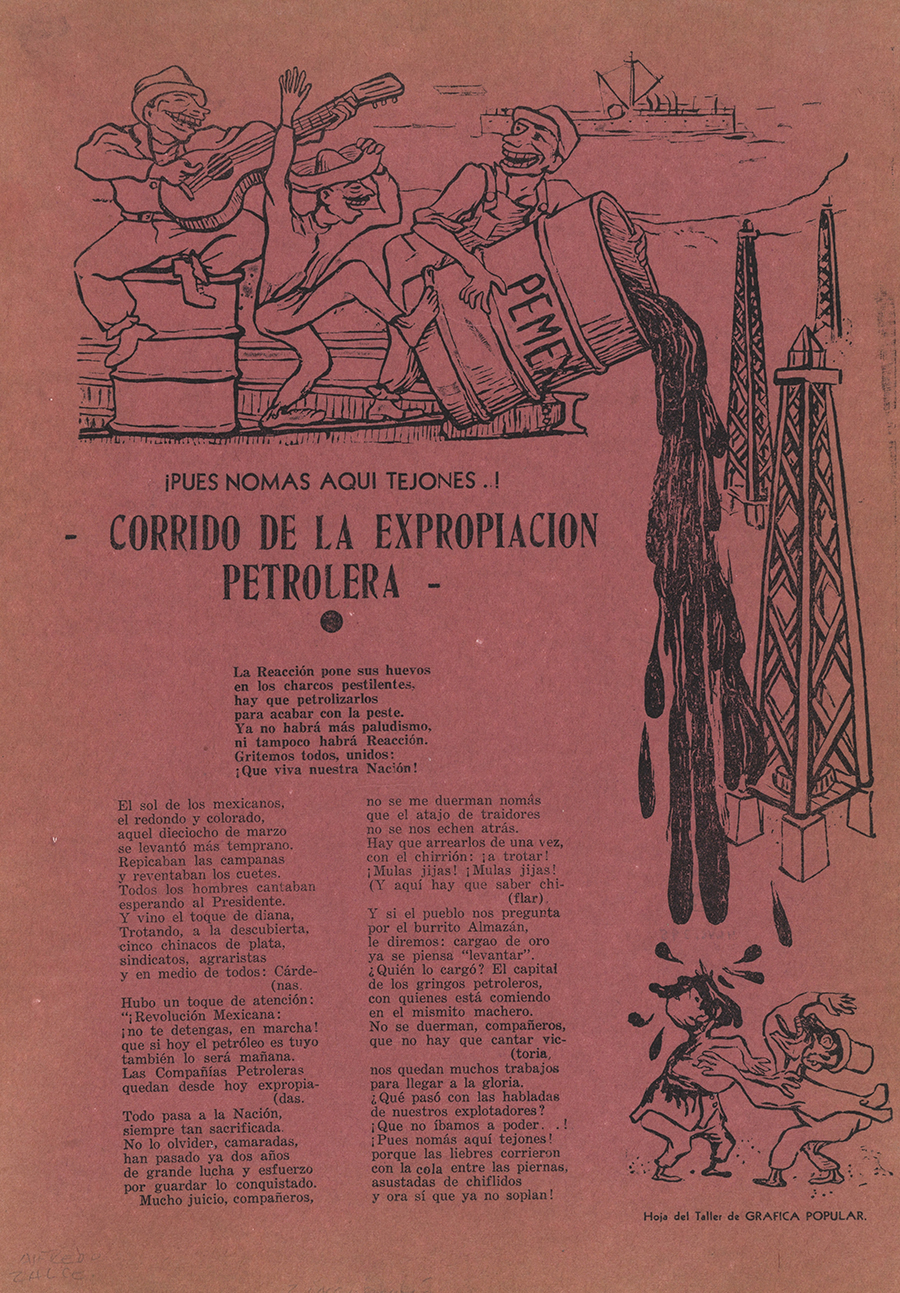James A. van Dyke
Shell Oil and the Political Confrontation of the Arts
During my residency, I worked on several aspects of a new book project, “Shell Oil and the Political Confrontation of the Arts.” This project originated with my recent article on the work of German painter Werner Peiner (1897–1984), which focused not on his work for the Nazi state but rather on what he produced for a German subsidiary of the Royal Dutch Shell group. Peiner designed monumental mosaics for a new office building in Hamburg and a stained-glass window for one in Berlin. He illustrated maps for affluent, educated automotive tourists. These things naturalized Royal Dutch Shell’s global power while suggesting how its products could contribute to national identity formation.

The Shell House on the Landwehr Canal in Berlin, built 1930–1932, based on a design by Emil Fahrenkamp, bpk Bildagentur, Art Resource, NY
Peiner’s work is one example of that powerful multinational oil company’s manifold use of architecture, art, and design to defend its interests in the face of popular resistance, the world economic crisis that began in 1929, and the geopolitical confrontations that shaped the ensuing decade. Of particular interest to scholars has been Shell’s corporate imagery in Britain: the Shell Mex House in central London, its series of posters designed by prominent artists, Shell Guides to British counties, and animated and documentary films. Yet even as British artists promoted Shell there, others worked for the corporation in very different political systems in Europe and around the world. Peiner was not the only artist to represent Shell in National Socialist Germany. Modernist graphic designers created posters, advertisements, and exhibition pavilions for Shell’s subsidiary in Fascist Italy. Surprising imagery was also used by Shell’s Mexican subsidiary to market its products in Latin America. Beginning in 1939, Shell began to intensify its cultural activity in Venezuela, where after 1945 modernism became the style of the authoritarian petrostate. By addressing a diverse body of materials, this transnational study will not only serve as a sociohistorical and ecocritical monograph on modernist corporate culture but also critically reconsider the extant scholarly understanding of the “political confrontation of the arts” of the 1930s, exemplified by the art and architecture exhibited at the Paris world’s fair in 1937.
As this book project is at an early stage, my reading at the Center ranged widely. It included edited volumes on oil culture and the “petroleumscape,” cultural and art-historical studies on the effects of oil extraction on Venezuelan art and culture from the late 1930s into the 1960s, and monographs on modern artists and designers who worked particularly extensively for British Shell in the 1930s. Furthermore, I worked through extensive new scholarship on Dr. Paul Wolff (1887–1951), a German photographer who achieved extraordinary commercial success with a moderated form of the New Vision. In 1933 Wolff was hired by Shell’s German subsidiary to photograph its refineries. The formal strategies and textual framing of these images, printed as postcards and in several photobooks from 1933 to 1937, are of considerable interest as corporate promotional materials in the context of Nazi ideology and economic policy.

Alfredo Zalce, Broadsheet with a ballad about oil expropriation, figures standing on a landing and spilling a barrel of oil onto figures below, published by Taller de Gráfica Popular in Mexico City, c. 1938, lithograph and letterpress on pink paper, The Metropolitan Museum of Art, New York, The Elisha Whittelsey Collection, The Elisha Whittelsey Fund, 1946, 46.46.395. © 2024 Artists Rights Society (ARS), New York / SOMAAP, Mexico City
The name of Shell’s new headquarters in London, mentioned above and opened in 1932, attests to the importance of the company’s presence in Mexico. Though Soviet artists represented the oil fields of Baku, Shell had no presence in Russia after the October Revolution. In revolutionary Mexico, by contrast, Shell continued to operate until 1938. For that reason, I devoted much of my time at the Center to searching image databases and surveying the literature on modern Mexican painting, printmaking, and photography. This brought to my attention at least one important case of art patronage by Shell’s Mexican subsidiary, as well as the company’s effects on the built environment. However, the chief result of this work was a clearer understanding of the ways in which avant-garde and revolutionary artists in Mexico represented the oil industry in general: the depiction of oil tanks and rigs in the technophilic work of Estridentismo from 1921 to 1927—that is the avant-garde led in Mexico City and Veracruz by the writer and intellectual Manuel Maples Arce, associated with such artists as Fermín Revueltas, Ramón Alva de la Canal, and Tina Modotti, and known for its celebratory vision of a modernized Mexico; the identification of foreign oil companies with exploitation, oppression, and imperialism by left-wing muralists and printmakers; and the iconography of social unity after the nationalization of the oil industry in 1938. The first two chapters of my book, as I envision it after my term at the Center, will focus on Shell’s corporate imagery—the building of an architectural and graphic global identity, the repression of the reality of oil extraction by neoromantic images of national landscapes, and the visual fantasies of mechanized speed and male power. My examination of art and visual culture in Mexico, on the other hand, will be at the center of the book’s third chapter, extending beyond Shell’s affirmative artistic culture to a revolutionary and occasionally ecocritical vision of the oil industry in the 1920s and 1930s.
University of Missouri
Paul Mellon Visiting Senior Fellow, January–February 2024
James A. van Dyke will return to his position as associate professor of art history at the University of Missouri for fall 2024. There he will continue his research on Royal Dutch Shell’s artistic culture and the representation of the oil industry in the 1920s and 1930s, while also working on several smaller studies on early 20th-century German art.
